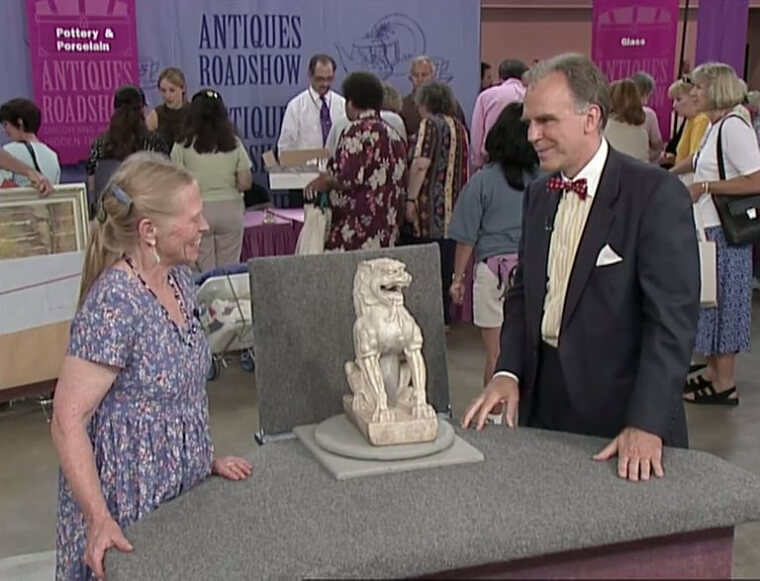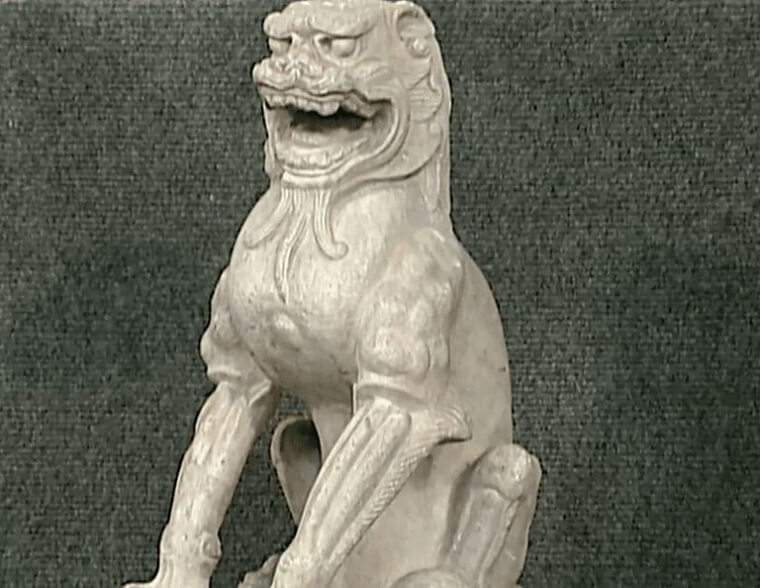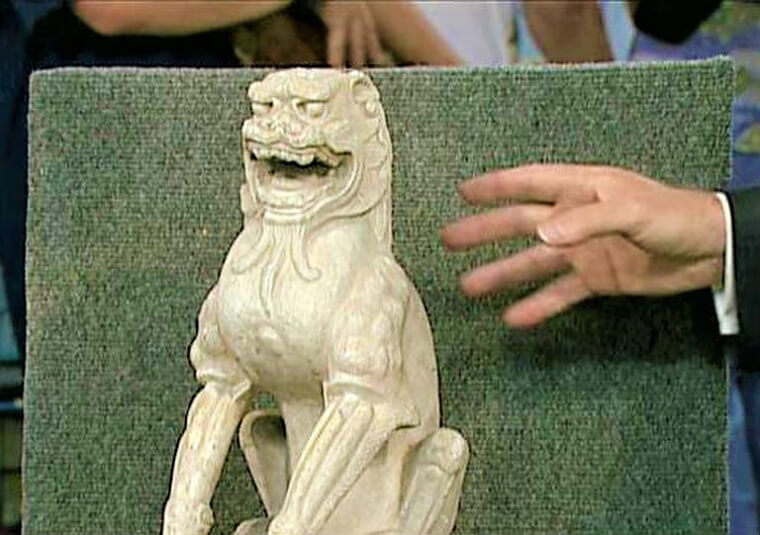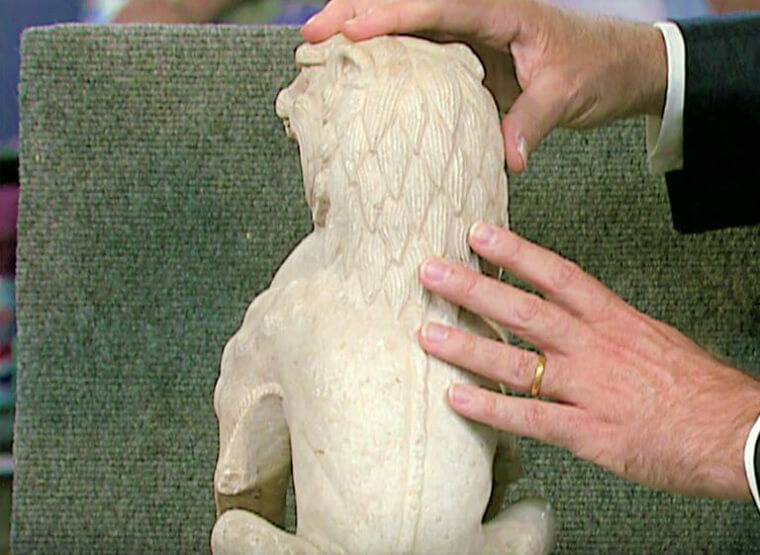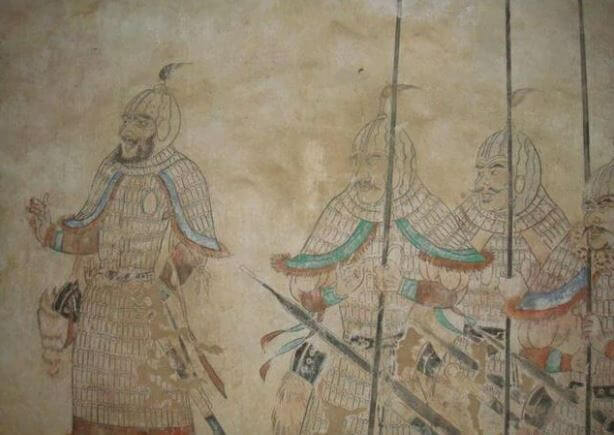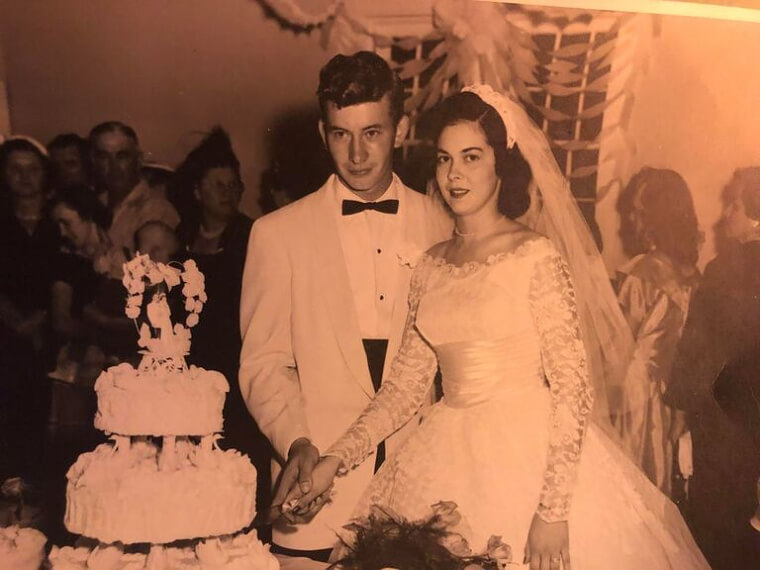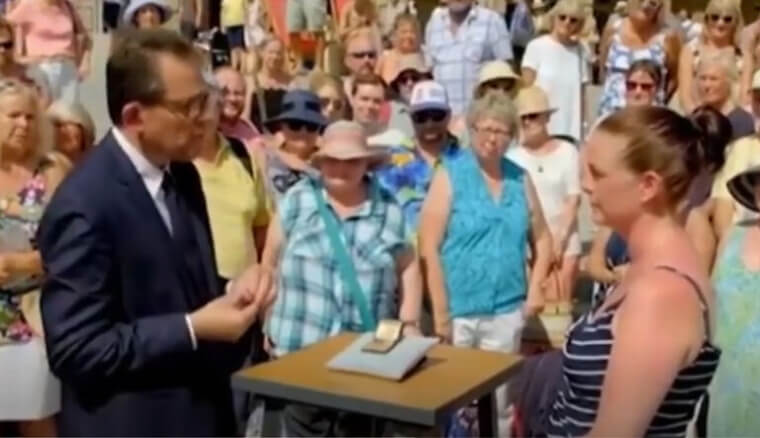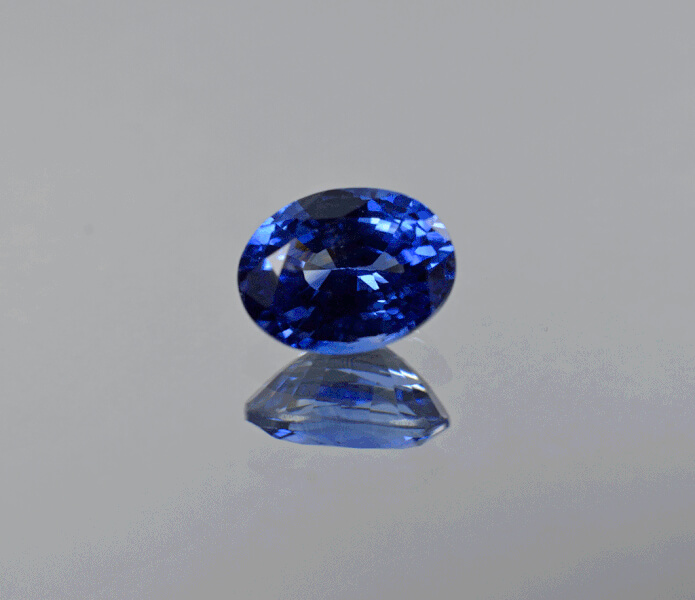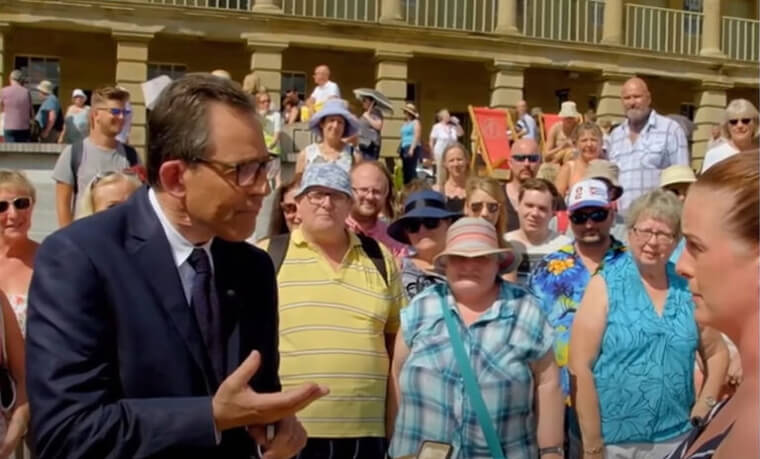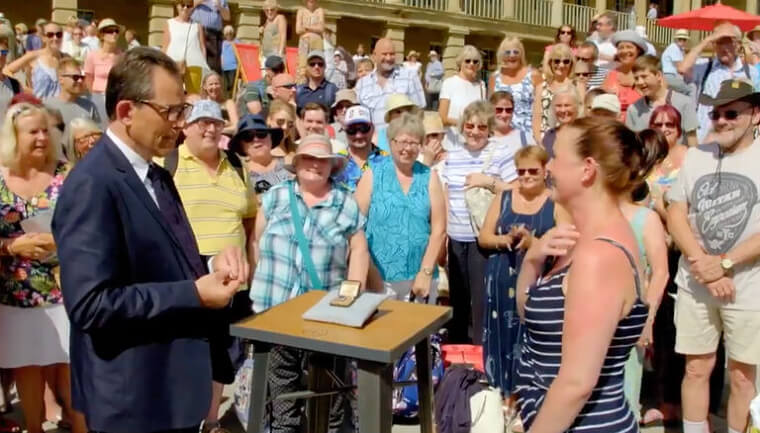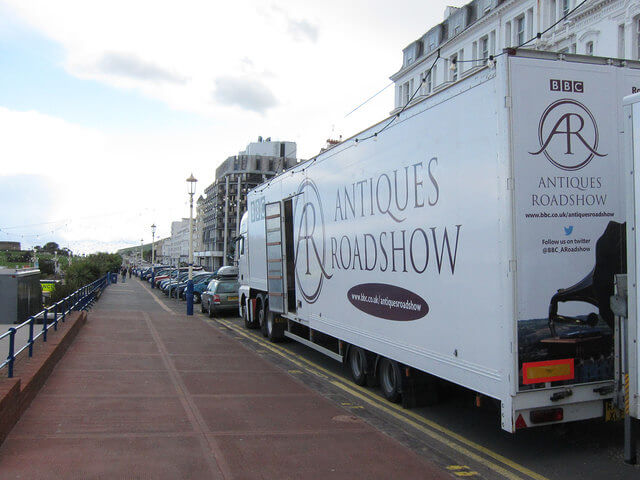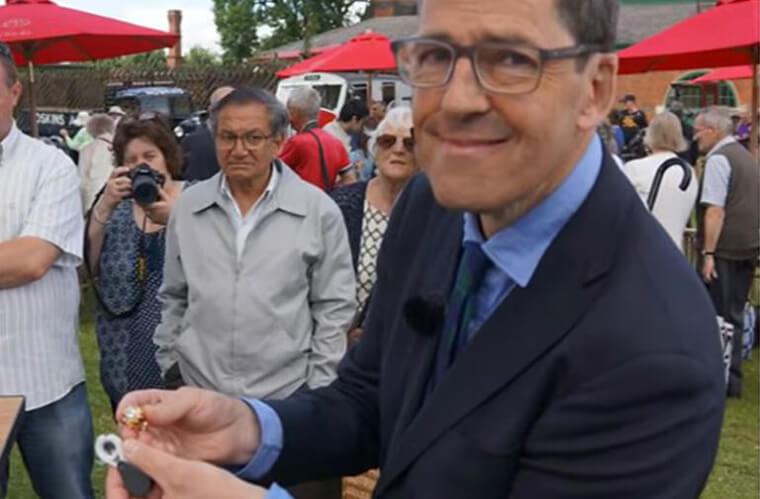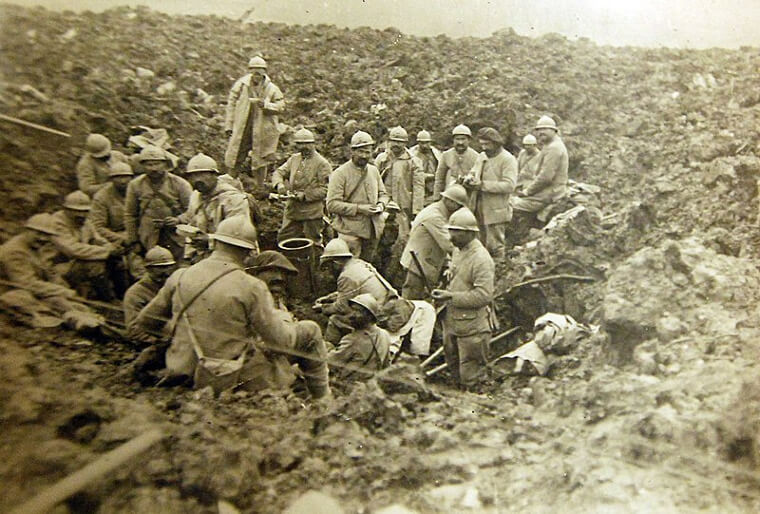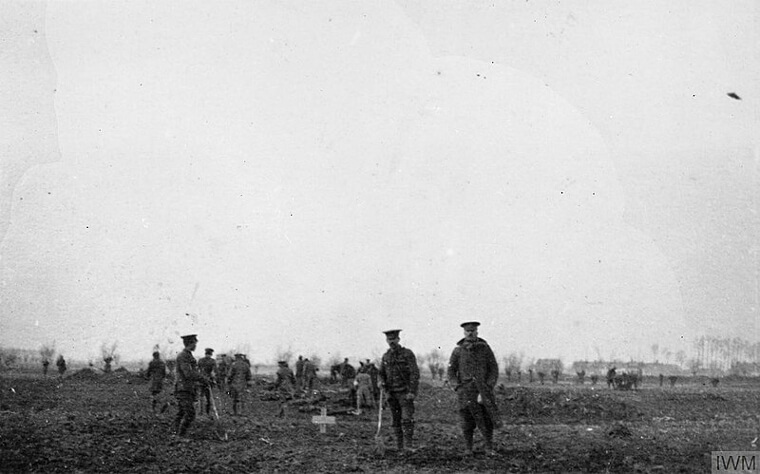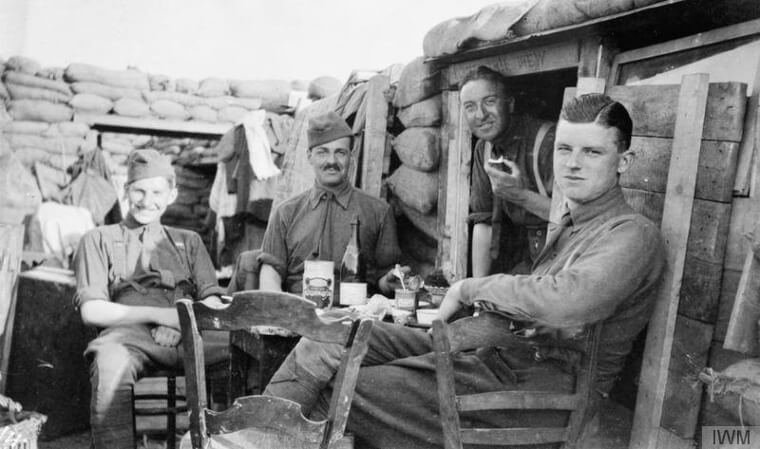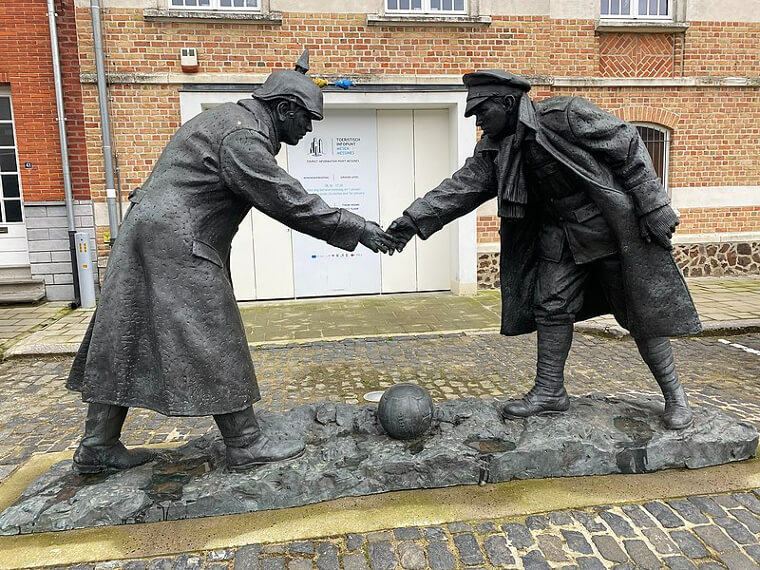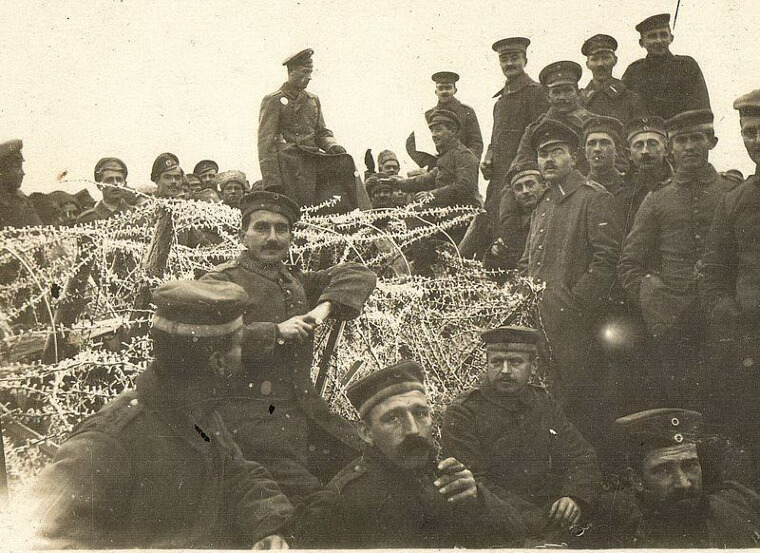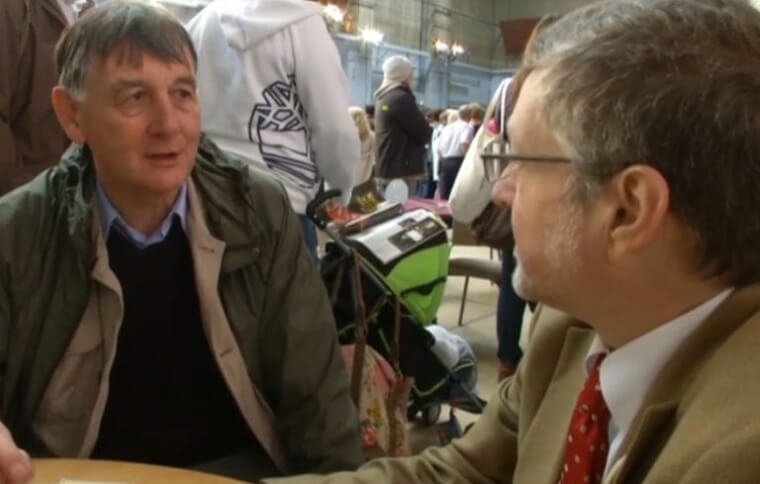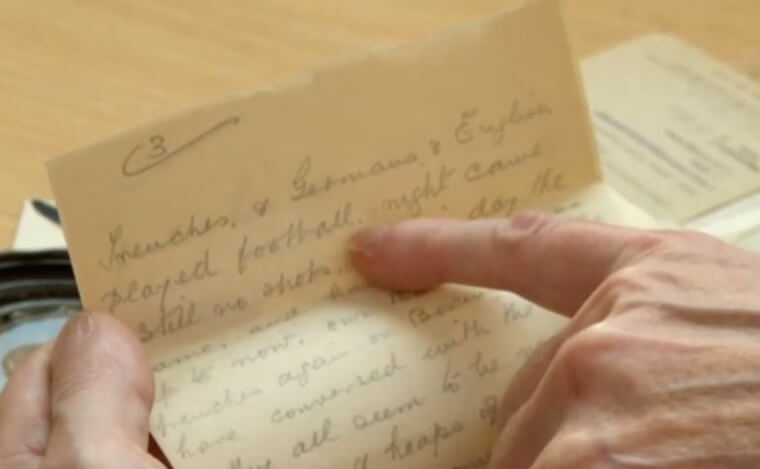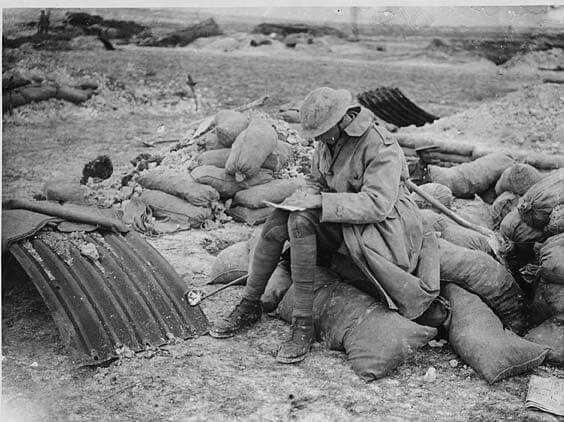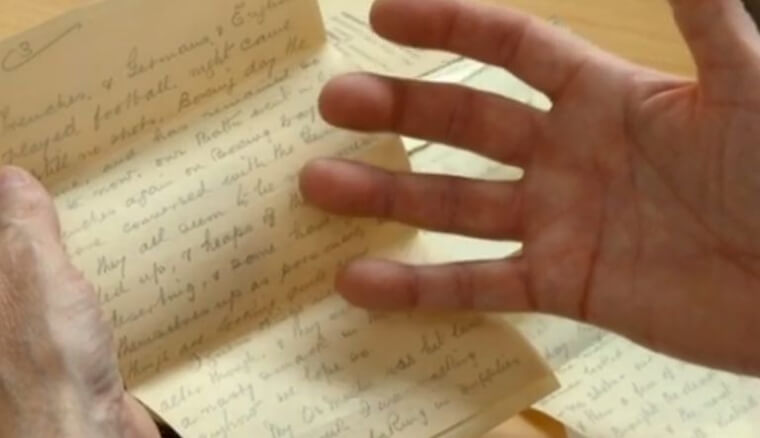The Experts
Without a doubt, one of the best parts of Antiques Roadshow is the experts. They're always very knowledgeable, and their enthusiasm and love for antiques flow from the screen. So, seeing Lark Mason appraise one of the show's most memorable treasures was a welcome sight. Mason is an expert in Chinses antiquities who's authored multiple books and runs his own appraising company. Suffice it to say; he has plenty of experience in the business.
However, just about anything can turn up on Antiques Roadshow, and one lady would end up bringing in a very special antique treasure that caught this veteran appraiser completely off guard.
The Show's Magic Formula
When a show has been around as long as the Antiques Roadshow, you can bet that they've managed to figure out exactly what works and what doesn't. The show has perfected its formula throughout the years, going on to inspire other shows that highlight the pawn, auction, or search for antiques. Antiques Roadshow usually starts with a guest explaining the history of a family heirloom before the expert steps in and fills in any holes.
After everything is explained, the appraiser drops the estimated value of an item. This is all done out in the open with others in the background waiting to have their items appraised. It was in one of these lines that something caught appraiser Lark Mason's eye on one unforgettable day.
A Very Special Antique Item
As a viewer, you could tell from the moment the camera cut to this Chinese statue's owner that the expert was waiting in suspense to start his appraisal. And who wouldn't be? If you work at an auction house or deal with antiques, then coming across something like this marble statue is a once-in-a-lifetime ordeal. Lark Mason's excitement was visible throughout the entire segment as the owner explained how the statue came into her possession.
It was obvious that the lion statue had been made in East Asia; however, Mason would go on to give viewers the full picture and history behind this surprising find.
The History of This Family Heirloom
While many items that come through the Antiques Roadshow have been passed down from one generation to another, there are often a lot of holes and mysteries associated with the antiques on the show. This is usually because this information is lost throughout the years, or an owner may have acquired an antique treasure from a dealer or pawn shop that didn't have much information about the item. The owner of this statue actually remembered buying it when she was on a trip to China.
She told the appraiser that this had been decades ago and that she couldn't really remember exactly when she bought it or any other information about the statue.
Tracing the Statue's Origin
Luckily, when it comes to art of any kind, there are usually a couple of defining features that art experts and antique appraisers can look for when determining an object's age. The owner of this family heirloom luckily had a close friend that knew a thing or two about Chinese art, and the friend placed the statue as being made during the Ming Dynasty in China. That means it could've been between the 14th to the 17th centuries.
However, vintage antiques from the Ming Dynasty aren't exceedingly rare, so something else had to be making appraiser Lark Mason so giddy and ready to start his assessment during the segment.
Leaving an Expert Absolutely Speechless
As giddy and ready to get started as Lark Mason was while the owner was explaining her family heirloom's story, you'd think he'd have plenty to say the first chance he got. However, that wasn't the case on this day. In fact, as soon as it was his turn to talk about the statue's history, he was speechless. He started out by saying, "Okay. Well, I'll start out by saying when this came up, I could barely…."
Mason then started to choke up a bit as he tried and struggled to get some words out. Despite having seen nearly everything throughout his long career and the many auctions he'd attended, this particular antique treasure had left the expert speechless.
A Case of Mistaken Identity
We're sure that when the owner of this statue saw her expert struggle to find the words to describe her family heirloom, she knew she was in for a pretty special appraisal. However, she couldn't have known just how special a treasure this truly was. Lark Mason started out by telling the owner that her statue actually wasn't made during the Ming Dynasty in China, although it was of Chinese origin.
While that might sound like bad news in many cases, this was different. The vintage antique wasn't a replica or a forgery but something much more valuable.
What Made the Statue so Special
When it comes to vintage and antique treasures, the value is usually in the details, which Lark Mason started pointing out immediately. "It's fantastic. This is truly… Sorry, I'm a little worked up," Mason said. "This is among the finest examples of Chinese art that we have seen on the Roadshow. The carving is beautiful. The workmanship is stunning." He then began pointing out the intricate detail and workmanship incorporated into the statue.
The marble was of the highest quality, and whoever had carved it was exceedingly talented because they carved detailed muscles into the lion's back and throughout the rest of the piece.
It Turned Out the Statue Was Way Older Than Originally Thought
When you're having an antique item appraised, one of the worst things you can hear an appraiser or expert says is that the item isn't from the period you think it is. That usually means that your treasure is actually a replica or fake. However, this phrase takes on a completely opposite meaning when your expert tells you that your antique is older than you thought it was.
Lark Mason told the statue's owner that her treasure was actually much older than she thought and that it came from a "golden" era of Chinese art. It turned out that it was made between the 6th and 9th centuries during the Tang Dynasty.
A Museum-Quality Piece
Lark Mason said that he'd seen a couple of similar treasures come up for auction during his long career as an expert in Chinese antiquities. However, he added that he'd never seen one as large or as in good shape as the one that was on the table in front of him at that moment. He cited the statue's chisel marks, lack of signage, and the quality of marble when placing its age.
He said that the piece was such an exquisite example that it would be perfectly at home in a museum, which is a pretty big declaration when it comes to antiques. It would also no doubt fetch a pretty large sum if it went up at auction.
The Astonishing Valuation
After explaining the history of the statue and why he thought it was from the Tang Dynasty, it was finally time for Lark Mason to put a value on this vintage treasure. Mason's valuation, it turned out, was shockingly high, but he emphasized that it was still on the conservative end of the spectrum. He said that he thought the ancient statue was worth anywhere from $120,000 to $180,000.
However, as we said, that estimate was on the conservative end, and Mason would put the valuation for insurance purposes much higher to be safe and make sure the item was properly insured.
Plus, a Massive Insurance Valuation
This lucky owner was pretty shocked when she heard Lark Mason's initial valuation, but she was truly taken aback when she heard how much she should insure her statue for. Mason put the insurance valuation at around $150,000 to $250,000. The owner came to the Antiques Roadshow, probably not expecting too much, and learned that she possessed museum-quality antique worth hundreds of thousands of dollars.
It's kind of crazy to think that this piece, which undoubtedly would be the crowning jewel of a lot of collections and auctions, was just sitting in this woman's home, but that's part of the allure of Antiques Roadshow. And it's not the only time that a priceless treasure made its way onto the show...
Coming Onto Antiques Roadshow With Low Expectations
When dealing with antique treasures, it matters who you get to appraise your item. A woman came on the Antiques Roadshow with this giant sapphire brooch, but she had pretty low expectations. She'd had the family heirloom appraised before, with many telling her that the sapphire and diamonds were actually fakes. She even said that some of her appraisers had been quite rude to her in the past. However, something about it must've stuck out to her because she decided to still bring it to the roadshow.
However, you can't really blame the past appraisers too much for calling it a piece of costume jewelry, as the sapphire is absolutely huge, and it's unlikely they'd ever seen anything like it in their careers, whether in person or through auctions.
The Right Expert for the Job
While her past experts and pawn shop appraisers had steered her in the wrong direction, her expert on this day wouldn't do the same. John Benjamin left school at 17 to work at an antique jewelry shop. He'd then worked his way up to become the International Director of Jewelry at Phillips Fine Art. Today, he has his own art appraisal company, and he was about to deliver some pretty redeeming news to the owner of this antique treasure.
Where others had taken one look at the brooch and quickly written it off as a piece of costume jewelry, far too large to be real, Benjamin had seen the piece of vintage jewelry for what it truly was.
This Family Heirloom's Heartfelt Backstory
As mentioned before, the brooch was a family heirloom, and it played a pretty significant role in her family's history. It was acquired by the owner's grandmother, who wore it on her wedding day. It was eventually passed down to her, and she also wore it on her wedding day. So, imagine taking your valued antique treasure to an appraiser, auction house, or pawn shop "expert" only to be told that it's not real.
Not only that, but then imagine these experts being rude to you during the process. Luckily, this woman was in for a pretty big surprise that we're sure more than made up for everything.
John Begins His Assessment and Appraisal
While we're sure the woman was expecting some big news after being pulled off to the side for a special appraisal, John Benjamin began his assessment by saying that the style of the brooch was a bit ordinary. In that, he meant that a sapphire surrounded by diamonds was a pretty common thing to see, and one might come across similar designs at the local pawn shop. This might've also been why some of the owner's past experts fumbled the ball on this one.
However, as the tension was building and the owner patiently awaited the valuation, Benjamin added a quick comment that completely took the appraisal in another direction, saying that looks can be deceiving.
Something About the Brooch Stuck Out
The more John Benjamin talked about the brooch, the more it became clear that something really stuck out to him when he first saw it. The appraiser noted how "The stone in the middle is an absolutely enormous sapphire." And it was truly enormous, so much so that others had simply written it off as costume jewelry when they first laid eyes on it. However, this family heirloom would turn out to be so much more than that.
Viewers at home and those that'd gathered around the roadshow to watch the appraisal knew some big news had to be coming, but we could only imagine what the owner was thinking at the time.
Determining the Sapphire's History
When it comes to gems, they're all unique in their own way. Because of this, different gems have different characteristics depending on whatever part of the world they were harvested in, even when they're technically the same type of stone. John Benjamin was able to determine that this vintage treasure was originally from Sri Lanka, and because of its lighter color, it's what is known as a Ceylon sapphire.
He also estimated that the huge sapphire was around 25 to 30 carats, adding in what may have been his most obvious statement, "In the world of gemstones, that's quite big, actually."
Moving on to the Rest of the Brooch
When the owner of the family heirloom had taken the brooch to be appraised in the past, some "experts" had told her that the diamonds surrounding the sapphire were actually made out of paste and that they weren't real. However, John Benjamin set the record straight, telling the owner that her antique treasure was made with real diamonds that were set in silver and gold. He added, "It's an absolute screamer," at which point, the owner let out a bit of a chuckle.
However, Benjamin wasn't anywhere near finished, and it turned out that the vintage treasure had quite an interesting story to tell and one that predated its story as a cherished family heirloom.
The Brooch's Full Story and History
When she'd first explained where she got the brooch, the owner said that her grandmother had first acquired it, but it turned out that the brooch had a much older history than that. Before it was a cherished family heirloom and a vintage treasure, it was "made about the mid to the end of the 19th century, so it is about 130 to 140 years old," John Benjamin said. The brooch wasn't just another ordinary piece of jewelry you might come across in a pawn shop.
At that moment, both the owner and the crowd that'd gathered around smiled and grinned cheerfully, patiently awaiting Benjamin's valuation of the massive sapphire and brooch that others had deemed fake.
The Owner Finally Gets Some Redemption
Undoubtedly, one of the best parts of John Benjamin's appraisal was simply telling the owner that her cherished family heirloom was, in fact, real. After all the trouble she went through and all of the jewelers that'd told her it wasn't real, we're sure the owner was feeling pretty good about bringing her brooch on Antiques Roadshow after her talk with Benjamin. He even offered her some words of encouragement.
"So, if I were to say that whoever these jewelers were, they were talking absolute rubbish, would you be happy to hear that?" Benjamin asked after going over the brooch's history. Of course, the owner said, "I would."
The Brooch's Real Value
Finally, it was time for John Benjamin to put a price on the massive piece of jewelry. He told the owner that "If I were to take such an item of jewelry and consign it to an auction, I would expect it to make between £40,000 to £50,000." That's a truly massive sum for something that many others had written off as a simple piece of costume jewelry and nothing more.
As you might expect, the owner was pretty surprised when hearing the news, as was the crowd that'd gathered around to hear the appraisal, which was truly historic.
A Touching Reaction
One of the best parts about Antiques Roadshow is seeing the guests' reactions when learning that their family heirloom is actually worth quite a bit more than they thought. And this woman's reaction was no exception. After a moment of being stunned, the owner said, "Oh my word, I don't want to swear. Blooming heck!" John Benjamin then replied, "Blooming heck indeed, it's an absolute beauty. What else can I say about it? It's fabulous."
However, that wasn't the end of the story, as Benjamin then revealed something that would make the appraisal truly one for the books that'd go down in Antiques Roadshow history.
The Largest Sapphire in Antiques Roadshow History
After telling the owner that she had a truly remarkable antique treasure on her hands, John Benjamin then dropped another bomb. "I've never seen a sapphire of this size ever brought onto the Antiques Roadshow," he said. Benjamin had been with the show since around 1991, so for the brooch to be the largest sapphire ever brought into the show during his time there is saying quite a lot.
Not only that, but the brooch had been dismissed as a trinket countless times by pawn shop jewelers and auction specialists in the past, and if not for this owner's hunch, it may have never even made it to the show.
Shedding Light on WWI's Little-Known "Christmas Truce"
Sometimes, a family heirloom with truly historical value walks into the Antiques Roadshow. That was the case when a man brought in a letter from his uncle, a sergeant major, that'd been written from the Western Front during World War I. The letter detailed the uncle's role in what's known as the Christmas Truce when soldiers from opposite sides of the war laid down their arms temporarily to celebrate the Christmas of 1914 together.
Not only did the contents of the letter renew the uncle's faith in humanity during one of the most brutal conflicts of human history, but it also revealed a bit more to the world about this historic event.
A Letter From the Front
The man who brought the letter from his uncle to the show was named Rodney Barker. Unlike some others that brought family heirlooms to the Antiques Roadshow, Barker had quite a bit of knowledge about his piece, and he told his uncle's story to the show's appraiser as the note was unfolded. "This is a letter from my uncle, who was a Sergeant Major in the Grenadier Guards, 1914, in France," Barker said.
It was immediately clear that whatever was written in the vintage letter had caught the attention of the show's producers and crew enough for them to focus an entire segment on the letter.
A Historic Witness to a Historic Event
As the appraiser read what was written on the letter, it became clear that this wasn't any ordinary letter and that it actually held quite a bit of historical value. "It says that he's buried 69 men, and then the next thing happened. A football kicked out of our trenches, and German and English played football," the appraiser said. The details of the Christmas Truce have been debated for nearly as long as the first stories of the event emerged.
So, that made this letter and antique treasure from an actual witness on the front all the more important, both for regular people interested in one of the war's most iconic events and for scholars studying history.
Setting the Stage for the Christmas of 1914
It's difficult for most to imagine today just how brutal and bloody World War I actually was. However, as Christmas approached on the Western Front in 1914, the heaviest of fighting had yet to occur. The war had only been raging for about six months, but it'd been going on long enough for the trenches to have been dug and for the soldiers to already be tired of it.
Most historical accounts of that Christmas say that the snow started to fall suddenly and that soldiers from both sides of the conflict later reported a change in the atmosphere. And that's also what the antique letter described.
The Shady Details of the Christmas Truce
There are a couple of different versions of how the Christmas Truce actually took place, but there are some common themes among all of the stories. Most accounts say that both sides — British and German — were so taken by the scenes of snow and fed up with fighting that they simply threw down their arms, greeted one another, and began an impromptu 24-hour ceasefire. All along the front, as the story goes, soldiers emerged from their trenches to share provisions and shake hands, sometimes next to hastily erected Christmas trees.
However, some of the most famous stories about the event involve football matches that broke out between the German and British troops. Stories of these matches have been debated by researchers for decades, but Antiques Roadshow was about to go a long way in settling the debate.
What Did Command Do During This Impromptu Truce?
Perhaps, one of the more hotly debated aspects of the Christmas Truce story is that officers quickly put an end to the ceasefire, not wanting to sacrifice a moment of fighting for some silly holiday. The story also goes that all of the governments involved in the war tried to hide the fact that their troops temporarily stopped fighting to celebrate Christmas together. The cover-up allegedly continued for years. If so, then this letter that appeared on Antiques Roadshow somehow managed to make it through censors.
However, while things undoubtedly varied from one place on the front to the other, many researchers say there's not much evidence to suggest officers put an end to the fun. There also wasn't any talk of this in the family heirloom that was now being evaluated.
"Night Came, and Still No Shots"
What's less clear to modern historians, perhaps due to a lack of reliable records and censorship at the time, is exactly how long the Christmas Truce actually lasted. That's why the letter found on Antiques Roadshow is so important. The family heirloom that Rodney Barker brought in details his uncle's account of how long the ceasefire took place. The sergeant major had written his letter that the peace had lasted past Boxing Day, or December 26.
That was a full day after Christmas, which verifies that the truce lasted beyond the holiday. "Night came, and still no shots," Barker's uncle wrote in his letter.
The Famous, Disputed Football Match
Rodney Barker came to the Antiques Roadshow fully aware of what he was in possession of. He explained to the appraiser that he also knew there was some debate among researchers as to whether or not the Christmas Truce football matches ever took place. “It was disputed that [the football match] ever took place for a long time by the powers that be,” Barker said. However, he added that he thought his letter and family heirloom was enough to finally put an end to the debate.
Because of all of the censorship at that time, it is difficult to tell exactly what happened during the Christmas of 1914, but here was a letter from an actual witness on the Antiques Roadshow.
The Appraiser Gives His Opinion
The Antiques Roadshow appraiser was pretty taken aback by the letter, as was apparent by his response to it. The appraiser said, "Isn't that astonishing? This man was a witness to that now very famous event… it's an incredibly historically important letter." Of course, the owner had suspected this was the case all along, and the latter part of the appraiser's statement would come into play in just a bit.
Next, it was time for the vintage letter's valuation, which got off to a somewhat rocky start as far as valuations go, but there was a special caveat in store.
Letters as Historical Antiques
When it comes to placing a value on an antique, there are a couple of different factors involved. However, historical letters are usually never given a value that's anything more than recognition as a neat little family heirloom. And that's what the Antiques Roadshow appraiser told Rodney Barker when he was getting ready to place a value on his uncle's letter. So, he must've been readying himself for a bit of a letdown.
However, because the letter actually contained information that was historically important, Barker's letter would end up being worth a bit more than most family heirlooms out there.
The Item's Final Value
Luckily, unlike most other letters out there, Rodney Barker's letter actually had some historical value and, as such, could be valued and given an auction price like any other antique. "In this instance, actually, I think it does have a value. I think a collector of First World War memorabilia could easily pay £150 for it, maybe even more," the appraiser said. Considering letters aren't usually appraised for much of anything, that's not a bad price.
But it just goes to show that this letter is an actual piece of history and one that was pretty much revealed to the world on an episode of Antiques Roadshow.



